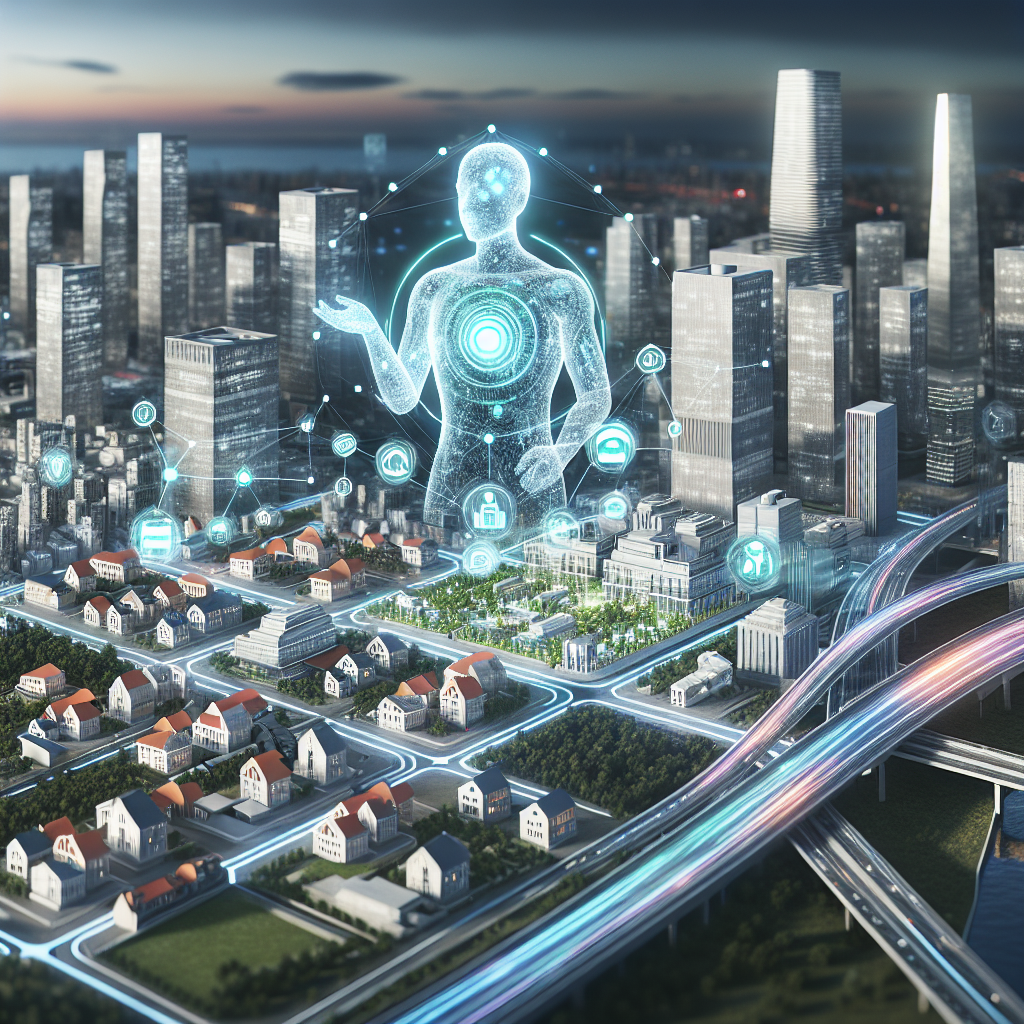Urban planning is a complex and critical process that shapes the development and growth of cities. With the rapid urbanization happening around the world, the need for smarter and more efficient urban planning has never been more pressing. Leveraging artificial intelligence (AI) has the potential to revolutionize the way cities are planned and managed, making them more sustainable, resilient, and livable.
AI technologies can analyze vast amounts of data, including demographic information, traffic patterns, environmental factors, and infrastructure needs, to help urban planners make informed decisions. By using AI algorithms, planners can optimize land use, improve transportation systems, enhance public services, and mitigate the impacts of climate change.
One of the key advantages of using AI in urban planning is its ability to predict future trends and scenarios. By analyzing historical data and trends, AI can forecast population growth, traffic congestion, energy consumption, and other factors that will impact the development of a city. This predictive capability allows planners to anticipate challenges and opportunities, and develop strategies to address them proactively.
AI can also help optimize the design and layout of urban areas. By using algorithms to analyze spatial data, planners can create more efficient and sustainable land use patterns. For example, AI can determine the best locations for parks, schools, and other public amenities, based on factors such as accessibility, population density, and environmental impact. This can help create more livable and equitable neighborhoods, where residents have easy access to essential services and green spaces.
Another important application of AI in urban planning is in transportation management. AI algorithms can analyze traffic patterns, optimize public transportation routes, and predict congestion hotspots. By using real-time data from sensors and cameras, AI can help planners improve traffic flow, reduce emissions, and enhance the overall efficiency of transportation systems. This can lead to shorter commute times, lower transportation costs, and a better quality of life for residents.
AI can also be used to enhance public safety and emergency response in cities. By analyzing crime data, social media feeds, and other sources of information, AI can help identify high-risk areas and predict potential criminal activities. This can enable law enforcement agencies to allocate resources more effectively, prevent crimes before they happen, and respond quickly to emergencies. In addition, AI can be used to optimize emergency response routes, coordinate rescue operations, and provide real-time updates to residents during natural disasters or other crises.
In addition to these applications, AI can also help cities become more sustainable and environmentally friendly. By analyzing energy consumption data, air quality measurements, and other environmental indicators, AI can help cities reduce their carbon footprint, improve air quality, and promote the use of renewable energy sources. AI can also assist in the design of green infrastructure, such as green roofs, rain gardens, and permeable pavements, that can help mitigate the effects of climate change and enhance the overall resilience of cities.
Despite the many benefits of using AI in urban planning, there are also challenges and concerns that need to be addressed. One of the main challenges is the availability and quality of data. AI algorithms rely on data to make accurate predictions and recommendations, so it is crucial to have access to reliable and up-to-date data sources. However, many cities lack the necessary infrastructure to collect and analyze data effectively, which can limit the potential of AI in urban planning.
Another challenge is the potential for bias in AI algorithms. If the data used to train AI models is biased or incomplete, it can lead to inaccurate or unfair outcomes. For example, AI algorithms that are trained on historical data may perpetuate existing inequalities or discrimination in urban planning decisions. It is important for planners to be aware of these risks and take steps to mitigate bias in AI systems, such as using diverse and representative data sets, testing algorithms for fairness and transparency, and involving stakeholders in the decision-making process.
Despite these challenges, the potential of AI in urban planning is immense. By harnessing the power of AI technologies, cities can become more efficient, sustainable, and resilient, and provide a better quality of life for their residents. As AI continues to evolve and improve, it will play an increasingly important role in shaping the future of urban development.
FAQs:
Q: How can AI help cities become more sustainable?
A: AI can analyze data on energy consumption, air quality, and other environmental factors to help cities reduce their carbon footprint, improve air quality, and promote the use of renewable energy sources. AI can also assist in the design of green infrastructure, such as green roofs and rain gardens, that can help mitigate the effects of climate change.
Q: What are some examples of AI applications in transportation management?
A: AI algorithms can analyze traffic patterns, optimize public transportation routes, and predict congestion hotspots. By using real-time data from sensors and cameras, AI can help planners improve traffic flow, reduce emissions, and enhance the overall efficiency of transportation systems.
Q: How can AI help cities enhance public safety and emergency response?
A: AI can analyze crime data, social media feeds, and other sources of information to help identify high-risk areas and predict potential criminal activities. This can enable law enforcement agencies to allocate resources more effectively, prevent crimes before they happen, and respond quickly to emergencies.
Q: What are some challenges of using AI in urban planning?
A: One of the main challenges is the availability and quality of data. AI algorithms rely on data to make accurate predictions and recommendations, so it is crucial to have access to reliable and up-to-date data sources. Another challenge is the potential for bias in AI algorithms, which can lead to inaccurate or unfair outcomes if not properly addressed.

